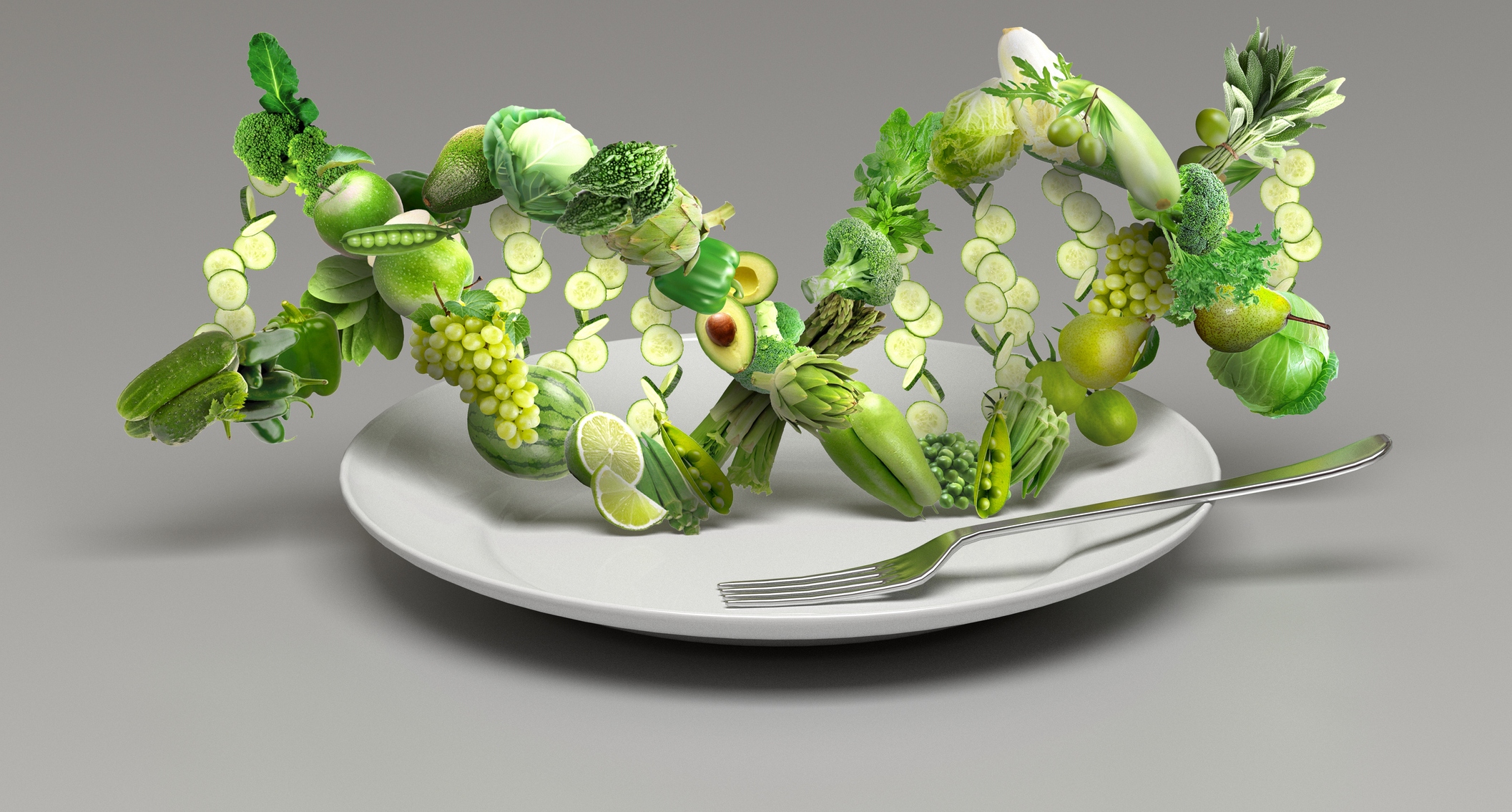The evolution of taste: flavours of the past, present and future

The evolution of flavour is hugely important for the history of civilisation. Taste has an important role in our enjoyment and choice of food. The tongue is covered in receptors that recognise the five basic tastes: salty, sour, bitter, sweet and umami (savoury). These taste buds are found also on the side of the mouth, the soft palate, the cheeks, the back of the throat and the oesophagus. This is why wine tasters swirl the wine around their mouths, to ensure the wine comes into contact with all the receptors for the maximum perception of the taste.
Other factors also contribute to how we experience flavour – vision for example. We expect to see food and drink in certain colours. If they have a different colour to that of what we expect, the brain will get mixed signals from the mouth and eyes and they will taste different. For that reason, mint ice cream is always green and strawberry drinks are always red. The launch of clear cola drinks in the early 90s was a failure as consumers associated cola flavour with a brown colour.
Mouthfeel, with a unique combination of textures and chemical interactions, also greatly influences how flavour is perceived. Smooth, crunchy, soft, crisp, juicy, creamy, hot or cold – all have an effect on the flavour of the food we eat. If we eat biscuits or crisps that have gone soft, we reject them immediately because the texture is not what we expect, and consequently neither is the flavour.
Surprisingly, sound has a role in how we discern flavour too. At his restaurant The Fat Duck in Bray, in 2007 chef Heston Blumenthal served his famous ‘Sound of the Sea’ dish, where diners listened to a recording of the ocean whilst eating a fish dish, which heightened the flavours of the seafood.
Memory and nostalgia play a part too. The effect of taste on memory is described in a famous passage from the book ‘In Search of Lost Time‘ (first translated as ‘Remembrance of Things Past’) by Marcel Proust. He describes having a vivid memory from his childhood, forty years before, after taking a sip of lime blossom tea and biting into a madeleine. Though the actual event occurred many years before and the memory was otherwise not very significant to Proust, the taste evoked the memory of an emotional event quite strongly. The expression ‘Proust’s madeleine’ is still used today to refer to an experience that prompts a memory of a smell or a taste that unexpectedly unlocks a past recollection.
Flavours of the past
The food we eat today and our preferred flavours have a long, complex and fascinating history, influenced by various invaders, environments, traditions, new foods from newly discovered lands and migrants. Some flavours have survived the passage of time, while others have disappeared altogether.
Ancient flavours: the Roman Empire
Liquamen (also known as garum) introduced by the ancient Romans, has disappeared from the western world. An extremely pungent and hugely popular fermented fish sauce, it was used as a condiment and as an ingredient in cooking.
The Romans adopted liquamen from the Greeks, who made it from a fish called garos. It was prepared from anchovies, red mullet, sprats and mackerel, mixed with the entrails of other larger fish, and then salted and put in a vessel to stand in the sun. After a time, the concentrated liquid was sieved and stored in amphorae.
Liquamen was prepared on a commercial scale around the Mediterranean and exported to the western Roman Empire. In common with most northern countries, Britons enjoyed highly seasoned foods and the condiment was enthusiastically received, although it was a delicacy enjoyed only by the wealthy and not by ordinary people.

A tavern in ancient Rome

Enjoying a country meal composed of meat in 1815. Picture: The Costume of Yorkshire by George Walker.
Left: A tavern in ancient Rome
Right: Enjoying a country meal composed of meat in 1815. Picture: The Costume of Yorkshire by George Walker.
The ancient Roman invaders had a huge influence in introducing many new flavours to the western world such as Mediterranean herbs, olive oil and wine. The collapse of the Roman Empire around 400AD and the huge taxes on salt resulted in various Roman cookery ingredients and sauces dying out in the west.
Although liquamen disappeared from the western world, similar products are still widely consumed in in parts of Asia, where they have been used for thousands of years, such as nam pla in Thailand, Nước chấm in Vietnam and Ishiri in Japan. Less authentic, milder, modern versions of liquamen can be found in the west, namely Worcestershire Sauce in the UK and colatura di alici in Italy.
The British fondness for heavily spiced and seasoned foods continued for hundreds of years, with wealthy people enjoying aromatic, pungent dishes often flavoured with spices we no longer or rarely use, such as cubebs, galingale and grains of paradise.
Sugar and spice
Exotic and novel spicy chutneys and pickles, introduced to England by East India merchants in the 18th century, were eagerly copied in kitchens. These were followed by relishes, ketchups and sauces in the early 19th century – the forerunners of today’s piquant bottled sauces, which we still enjoy.
As spices and sugar became more affordable and more easily available in the 18th century, the increasing use of sugar made food more palatable and heavily spiced food fell out of fashion. British cooking began to become more in keeping with what we recognise today. Cheaper sugar led to a profusion of sugary confections: preserves, candied fruits and vegetables, puddings, desserts, confectionery and syrups; at the end of the 18th century the choice was overwhelming. The British were acquiring their love of sugar and the famous British ‘sweet tooth’.
Flavours of the ‘now’
Over the past century, the taste of food has changed significantly for several reasons, including improved scientific knowledge of flavour and production methods. The greatest difference between foods of today and of a century ago is the amount of processing and additives used. Processed convenience foods and ready meals were unknown in the past and almost all meals were prepared from raw ingredients.
When food is highly processed, most of its flavour and texture is destroyed, so colours, flavourings, thickeners, emulsifiers and gelling agents are needed to improve the flavour and mouthfeel. Popular flavours today in the confectionary industry include vanilla, salted caramel whilst savoury food has seen a surge in spicy and exotic flavours.
Developing new flavours
These days, food companies employ flavourists and scientists whose job is to create flavours to improve the taste of processed foods. The demand for plant-based meat alternatives, and other vegetarian-friendly products has led to the creation of flavour ingredients to mimic the taste of meat, fish, dairy and confectionary. Flavour and ingredient companies are continually working to meet demand for popular and new taste combinations. Edlong create flavours that taste like dairy for the plant-based industry. Givaudan aim to shape the future of flavours with functional and sustainable ingredients and innovative tastes. The company is to open a new food innovation hub in Brazil to continue to be at the forefront of the flavour and ingredient sector. Ingredion also offer breakthrough ingredients for a variety of applications, including plant-based, confectionary, dairy, meat, fish, batters and breadings.
Nostalgic, healthy, local and exotic flavours
Food manufacturers strive to keep up with capricious food fashions and to meet consumer preferences, as flavour trends are constantly evolving. Customers expect the flavour of commercial products to be consistent and for them to always look and smell the same. The advent of processed foods and pre-packaged food created a taste for strong, sugary, salty, fatty foods, but consumers are increasingly moving away from these types of products and are looking for cleaner, healthier and more natural flavours.
Food trends are influenced by advertising, marketing and social media, as well as an increase in globalisation, mass travel and discoveries of foreign flavours. Products such as banana blossom, miso and asian and middle eastern ingredients have been extremely popular.
Since the COVID 19 pandemic lockdowns people have also hankered after comforting nostalgic foods from happier times. Simple, regional flavours bought from local producers and farmers’ markets have also gained popularity, a form of rebellion against over 40 years of ultra processed, mass market foods. Nowadays consumers want food that is perceived as healthy, better for us and functional, consequently trendy ingredients with health benefits and naturally containing pre-and probiotics – beneficial to gut health – such as fermented foods like kefir, kombucha and kimchi and turmeric, seaweeds, matcha, quinoa and hemp have been popular for some time. The demand for more exotic flavours such as jackfruit and yuzu is also increasing as consumers seek new gastronomic experiences.
Although today’s consumers look for healthier foods with less salt, sugar and fat, flavour is still the main reason people buy food. They regard this as more important than price or health benefits. No matter how good and persuasive the marketing and however attractive the packaging of a new food or drink, if the product’s taste doesn’t appeal to the consumer, they won’t buy it a second time.
Flavours of the future
Low and no alcohol
The buzz in food marketing is that the flavours of the future won’t just be tasted but will also be felt. A growing trend is for alcohol free or low-alcohol drinks (beer, cider, wine, spirits and cocktails) using botanical and functional flavours from spices, herbs and flowers. The trend for clean label, natural and local is still big and is forecast to become bigger as consumers move away from highly processed foods and want foods that are free from additives with natural origin ingredients that are sustainably sourced.
Fungi, mushrooms and seaweed
Mycoprotein (produced from mycelium, the root-like threads of fungi that live below the ground) with the addition of other ingredients such as herbs and spices create products with the taste and texture of meat. The growing trend of veganism and the call for natural ingredients will see increased demand for these foods. Mushrooms have also made an appearance in hot beverages, such as coffee and tea and even paired with chocolate creations. Their earthy, umami flavour and meaty texture is likely to be used in many more applications and they are set to be an even bigger ingredient in the years to come.
Seaweed and microalgae are also on the rise, not only for their health and sustainability benefits, but to add a flavour of the sea to vegan fish substitutes, which are still scarce on the market compared to meat alternatives, but are a huge area of development.
Researchers are currently developing nanoparticles that give delayed bursts of flavour in the mouth. In 2018 scientists created tiny magnetic particles to bind and remove off-tasting flavour compounds in red wine, while maintaining its full aroma, and we might see this technology being used more widely in other food and drink applications.
The impact of food shortages on flavour
Future food shortages could see the introduction of new flavours as lesser known crops are planted. These may very well include ancient grains such as amaranth, millet and other underused ones in global agriculture, especially those coming from developing countries.
Health, sustainability and environmental concerns are all having an impact on new flavours. With ingredient companies investing in new technologies and novel tastes, the years to come will bring more innovation and new flavour profiles to our palates and our tables.









